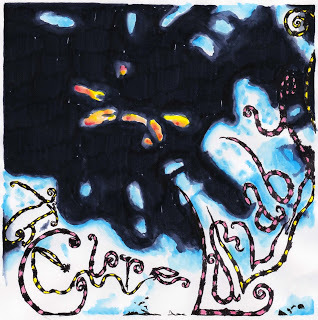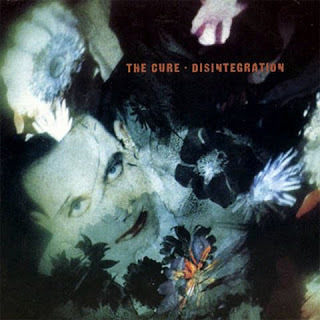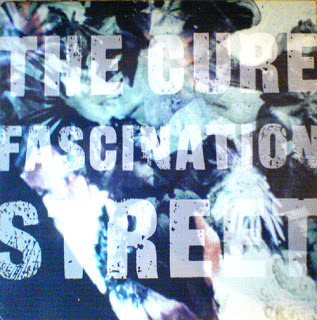Disintegration
 Never has misery sounded so hauntingly beautiful as on Disintegration, a mopey masterpiece that many consider among the greatest LPs of all time (this writer included). In mood the album is a confident, elaborate, evolution of 1981's Faith, dealing with those oft-mined themes of loss, despair and being eaten by giant spiders, yet this is an altogether new type of bleakness, blackness, distortion; a listening experience akin to being submerged by wave upon wave of melancholia. A daunting 70-minutes in length, Disintegration begins with the hypnotic wind chimes of "Plainsong," and lulls the listener in with the relatively radio-friendly single "Pictures of You" before dragging us further into the darkness with every passing track. By the time we reach "The Same Deep Water as You" and "Prayers for Rain" at the heart of the album, both epic, dense in sound and each weighing in at around seven minutes, we're completely submerged. (Anyone who is not should have their black mascara confiscated.) Few albums hammer home an atmosphere as thoroughly as this one, injecting hopelessness into your veins like a drug you've always craved, yet, somehow, this album doesn't make you want to slash your wrists; the music so fascinating, so unstoppable in its circling, extended anthems, it begs you instead to join so relentlessly that one takes comfort in the hurt rather than seeking relief from the pain. Wonderful, thick, beautiful stuff. Sad, bitter tales can comfort us, too.
Never has misery sounded so hauntingly beautiful as on Disintegration, a mopey masterpiece that many consider among the greatest LPs of all time (this writer included). In mood the album is a confident, elaborate, evolution of 1981's Faith, dealing with those oft-mined themes of loss, despair and being eaten by giant spiders, yet this is an altogether new type of bleakness, blackness, distortion; a listening experience akin to being submerged by wave upon wave of melancholia. A daunting 70-minutes in length, Disintegration begins with the hypnotic wind chimes of "Plainsong," and lulls the listener in with the relatively radio-friendly single "Pictures of You" before dragging us further into the darkness with every passing track. By the time we reach "The Same Deep Water as You" and "Prayers for Rain" at the heart of the album, both epic, dense in sound and each weighing in at around seven minutes, we're completely submerged. (Anyone who is not should have their black mascara confiscated.) Few albums hammer home an atmosphere as thoroughly as this one, injecting hopelessness into your veins like a drug you've always craved, yet, somehow, this album doesn't make you want to slash your wrists; the music so fascinating, so unstoppable in its circling, extended anthems, it begs you instead to join so relentlessly that one takes comfort in the hurt rather than seeking relief from the pain. Wonderful, thick, beautiful stuff. Sad, bitter tales can comfort us, too.Hellish and heavenly, urban and pastoral, Disintegration was meant to satisfy Smith's urge to create "something autumnal" — a study in muted atmosphere suspended in twilight. Often pegged as monochromatic, Disintegration has only grown more subtly shaded — and lingeringly complex — over time.
 "Plainsong" veers straight ahead into The Cure’s darkest, most depressive writings since Pornography. "'I think it's dark and it looks like rain,' you said./ 'And the wind is blowing like it's the end of the world,' you said./ 'And it's so cold it's like the cold if you were dead," and then you smiled for a second." Depressing to the point of ennui, but for the tag, "Then you smiled for a second." So painfully beautiful, like Barber’s Adagio or Rickie Lee Jones' "Company." One need not critique another track, as each is this good, each following a path that the cure embraced so skillfully, the extended, atmospheric intro. We'd heard it before, all the way back to Seventeen Seconds and as recently as Kiss Me Kiss Me Kiss Me's "A Thousand Hours" and "Just One More Kiss," but here the intro is perfected. "Plainsong" refers to a type of music, a body of traditional songs which used the liturgies of the Roman Catholic church, "a monophonic consisting of a single, unaccompanied melodic line. It often uses the lengthy reverberations and resonant modes of cathedrals to create harmonies," which explain’s the lengthy reverberations and resonant modes for the Cure's rendition. I don’t know about monophonic, but certainly something cathedral-like and gothic has infused the atmosphere of Disintegration from this very first dark step. One of the greatest opening songs ever.
"Plainsong" veers straight ahead into The Cure’s darkest, most depressive writings since Pornography. "'I think it's dark and it looks like rain,' you said./ 'And the wind is blowing like it's the end of the world,' you said./ 'And it's so cold it's like the cold if you were dead," and then you smiled for a second." Depressing to the point of ennui, but for the tag, "Then you smiled for a second." So painfully beautiful, like Barber’s Adagio or Rickie Lee Jones' "Company." One need not critique another track, as each is this good, each following a path that the cure embraced so skillfully, the extended, atmospheric intro. We'd heard it before, all the way back to Seventeen Seconds and as recently as Kiss Me Kiss Me Kiss Me's "A Thousand Hours" and "Just One More Kiss," but here the intro is perfected. "Plainsong" refers to a type of music, a body of traditional songs which used the liturgies of the Roman Catholic church, "a monophonic consisting of a single, unaccompanied melodic line. It often uses the lengthy reverberations and resonant modes of cathedrals to create harmonies," which explain’s the lengthy reverberations and resonant modes for the Cure's rendition. I don’t know about monophonic, but certainly something cathedral-like and gothic has infused the atmosphere of Disintegration from this very first dark step. One of the greatest opening songs ever.In the same way that Fun's "We Are Young" isn't about being young, The Great Gatsby isn't about the recklessness of youth, but the recklessness at the end of youth. The moment when Gatsby has Daisy in his grasp is the moment when the green light - the symbol of his youthful desires - loses its luster: "His count of enchanted objects had diminished by one," Nick Carraway croons, with the dread promise of more to follow. The members of Fun had turned 30 when they sang "We Are Young," as had Nick at the novel's climax: "I was thirty. Before me stretched the portentous, menacing road of a new decade... Thirty - the promise of a decade of loneliness, a thinning list of single men to know, a thinning brief-case of enthusiasm, thinning hair." That's about as brutal a sentences as any 30-year-old can stand. Similarly, The Cure's Disintegration was conceived during the annus horribilis of Robert Smith. In April 1988 he'd hit 29, and was depressed and obsessed with delivering a "masterpiece" before the big 3-0.
In some ways, Smith's despondency was at odds with the The Cure's status as a globally-renowned alternative rock band. Their previous LP, 1987's poppy though melancholy Kiss Me, Kiss Me, Kiss Me was a celebration of the band's first decade and helped The Cure crack mainstream America, the ultimate prize. Robert Smith, however, was not a happy puppy. Believing that most bands delivered their masterpiece by the time they were thirty, he set about writing "the most intense thing The Cure have ever done." In many ways, Disintegration was the prototype of a Robert Smith solo album. "I would have been quite happy to make those songs on my own, if that band hadn't liked them."
 The atmosphere around him was particularly toxic. Smith was in a depressed, non-communicative state ("one of my non-talking modes"), as he fretted over creating an LP that contained the doom-laden gravitas of 1982's brilliant Pornography. "I actually wanted an environment that was unpleasant," he recalled, and a combination of his own truculence and keyboard player Lol Tolhurst's raging alcoholism ensured that the creation of Disintegration was a miserable experience.
The atmosphere around him was particularly toxic. Smith was in a depressed, non-communicative state ("one of my non-talking modes"), as he fretted over creating an LP that contained the doom-laden gravitas of 1982's brilliant Pornography. "I actually wanted an environment that was unpleasant," he recalled, and a combination of his own truculence and keyboard player Lol Tolhurst's raging alcoholism ensured that the creation of Disintegration was a miserable experience. While The Cure's American record label (Elektra) hated Disintegration on first listen ("There was just this look of absolute dismay on their faces," Smith confirmed), the album was a worldwide hit. Selling in excess of 3 million copies, Disintegration ensured that despite Smith's best efforts The Cure had "become everything I didn't want us to become - a stadium rock band." And a miserable stadium rock band at that. Chris Roberts' glowing Melody Maker review offered up a perplexing conundrum: "How can a group this disturbing and depressing be so popular?" Simple really; there's a dark side in all of us (had Star Wars taught Roberts nothing?), a part of us that relishes the underbelly of our psyche, the part of us that likes the room when its dark, a part that savors the monsters.
My mother was a back-up singer for the likes of Burt Bacharach and Ray Conniff, and so music was a constant in our lives. I recall having an 8-track player in our Ford Falcon and my mother playing only one side of People by Barbra Streisand. The title song was on Side 4 with "Love is a Bore" and "Don't Like Goodbyes" (an unusual Harold Arlen song with lyrics by Truman Capote). My mother would skip 1-3 and we'd listen to Side 4 over and over, just so that she could sing "People." It wasn't long afterwards that she got a new old car with a cassette, and she'd play "People" and rewind and say, "Listen to this part." It was when I realized the power of rewind; it was when I realized that little bits of songs, snippets of melody or vocals, could have such an impact. Since then I've listened to music that way: rewinding.
Disintegration is that album on which every rewind reveals something new, something dark or something unexpected about People.
Published on May 26, 2018 05:28
No comments have been added yet.



